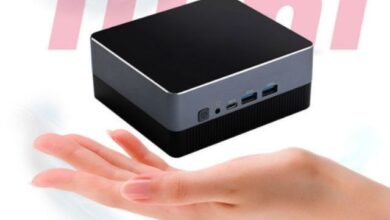Five Quick Tips for Browsing Facebook Anonymous

Facebook is the biggest social media platform, but it is also the biggest offender when it comes to privacy. The solution is obvious – you need to provide Facebook with as little data as possible. But browsing Facebook anonymously isn’t easy, nor is the knowledge on how to do so widespread. We’re here to fill this gap.
Why browse Facebook anonymously?
Sharing information on Facebook is essential to the platform’s work. It is a part of the enforced community standards to be authentic. All users are expected to register with their real name, email, phone number, profile photo – you name it. In exchange, you get access to the authentic information of other users. Fair exchange, right?
Well, not really. There have been so many Facebook users’ data leaks that nowadays they don’t even make the first page headlines. It’s becoming a common occurrence, and it doesn’t seem that Facebook is doing much to stop it. In fact, they might even be profiting from this themselves.
That should be enough incentive for anyone to protect their identity on Facebook or at least for those who value their privacy. It is a twofold task – one part is to protect your identity from Facebook itself and another from other users. Our first tip will cover the latter.
Limit accessibility of your Facebook profile
Changing Facebook settings won’t ensure your anonymity, but it‘s certainly a step in the right direction. You can find the first part of settings by logging in to Facebook through a web browser, pressing the arrow in the top right corner and selecting “settings & privacy”.
- Change who can see your posts on Facebook. Many of us like to post on Facebook. But without knowing, we may give away a lot of private information to strangers. I recommend limiting this option to friends only.
- Turn off the ability to find you via email or phone number. It will make it harder for someone to figure out this information. Unfortunately, there is no ability to turn off the search for your name.
- Disable search engines outside of Facebook. This setting is one of the most important. Unticking it will greatly limit access to your profile for those who do not have a Facebook account themselves.
Make your profile more private
The next batch of settings comes from the “About” section. You can find it by clicking on your name on the top right side of the page while logged in to your Facebook profile. “About” is between “Posts” and “Friends”, and there you will be able to:
- Make your personal information private. You will be able to see every piece of personal information you have provided to Facebook over the years and change who can access it. For maximum privacy, change the audience to “only me”.
- Hide check-in and interest sections. You might have liked a lot of different places and pages, movies, music or other interests. All this can be a valuable asset for marketers. You want to provide as little information as possible. It’s best to unlike everything and hide these sections.
All these changes will hide some of your information from other people on Facebook, but not from the platform itself. Even worse is that they can change their rules, including these security settings, without notice. Therefore, you’ll have to take additional steps.
Diversify your contact information
As already mentioned, you can only register on Facebook with your actual name. However, you can still limit the genuineness of other information you provide, such as an email or a phone number.
A good strategy is to create a new email address for every registration. One for Facebook, another for Instagram, Reddit and every other account if possible. If any of them leaks user data, they won’t give out the email address you actually use.
When it comes to phone numbers, it’s best to not provide them at all, but if you must, better use a throwaway number. Register for a virtual phone number service or, even better, buy a prepaid SIM card.
Use Facebook proxies
Proxies act as intermediaries when you connect to websites on the internet. You connect to the proxy server first, and it then accesses the needed website while hiding your IP address. Facebook proxies are fine-tuned for connecting to this social media platform.
Usually, they are residential proxies with a legitimate home connection tied to an internet service provider. One such proxy is not enough to bypass Facebook security algorithms. So good providers will allow you to use several such proxies rotating regularly.
Facebook proxies are the best way to hide your identity from the platform itself. Since your IP will be hidden, they won’t know who and from where they connect. Combined with our previous tips, this is the only sure way to browse Facebook anonymously.
Unfortunately, free proxies are unreliable, so you will need to pay a bit for your privacy. Consider looking into Metrow and their superior Facebook proxies. There is a free trial available, so you won’t need to pay at first.
Use Tor
Tor is a privacy solution allowing you to surf the web anonymously. It uses an onion-like network to route requests by splitting them into parts before reaching the destination. Every device on the network has only a part of the request, so tracking activity and unveiling real IP is extremely hard.
Tor is suitable with Facebook, and there’s even a dedicated link available. However, it has a major flaw – the connection speed is painstakingly slow. Your request has to go through many devices on the network. Most of them are volunteers, so a fast connection is not a top priority.
Tor is the second option to browse Facebook anonymously. I recommend using it only occasionally and choosing Facebook proxies on a more regular basis.
Conclusion
So here you have it – tips on saving anonymity from Facebook and its users. Proxies are the best tool here. The only better option for anonymity is to delete your profile altogether.





